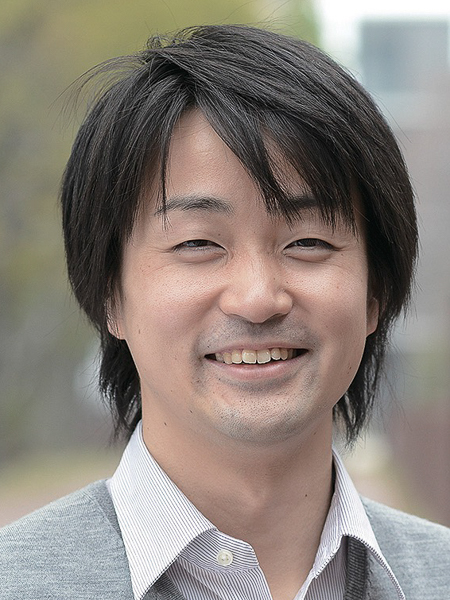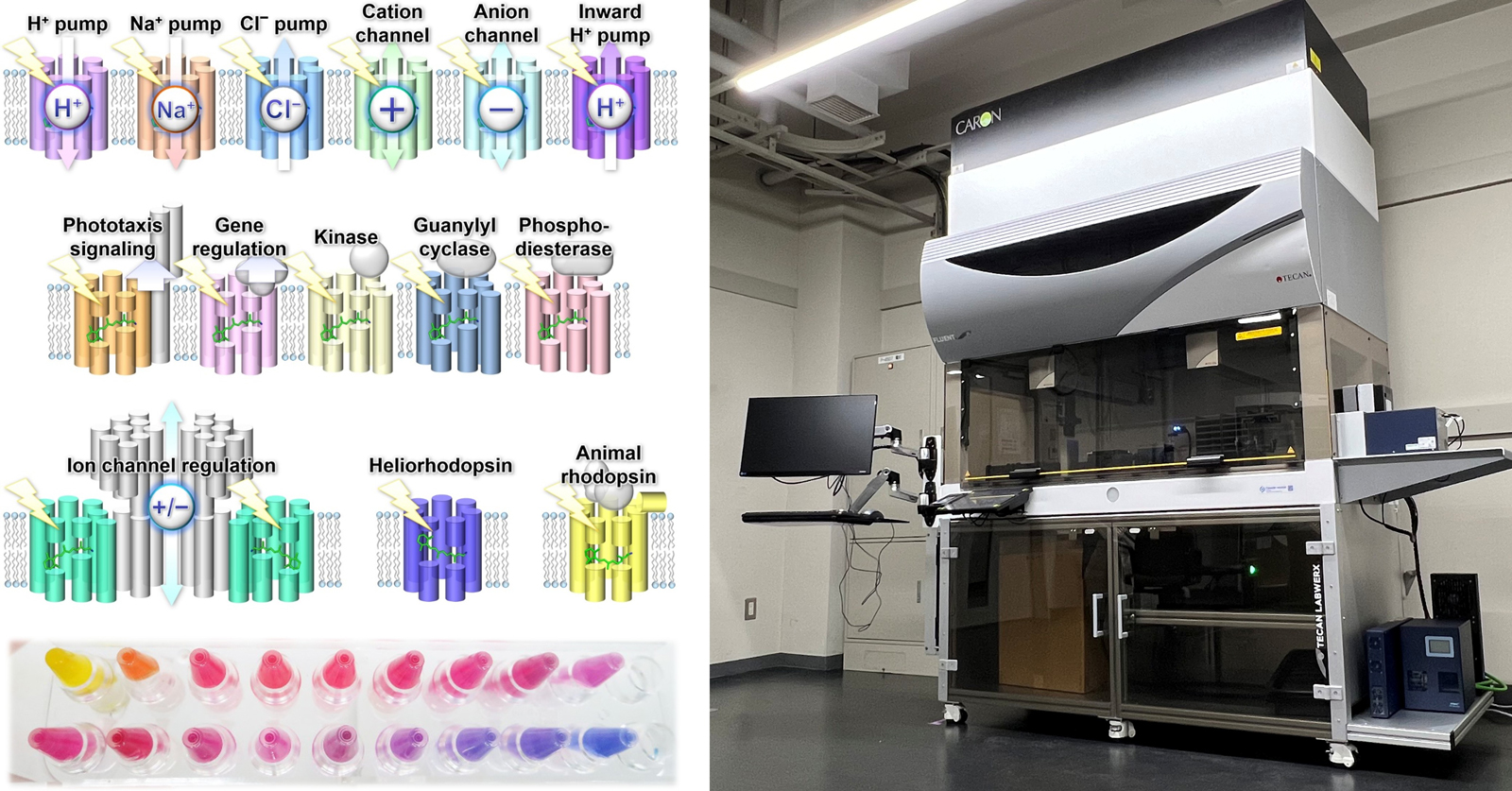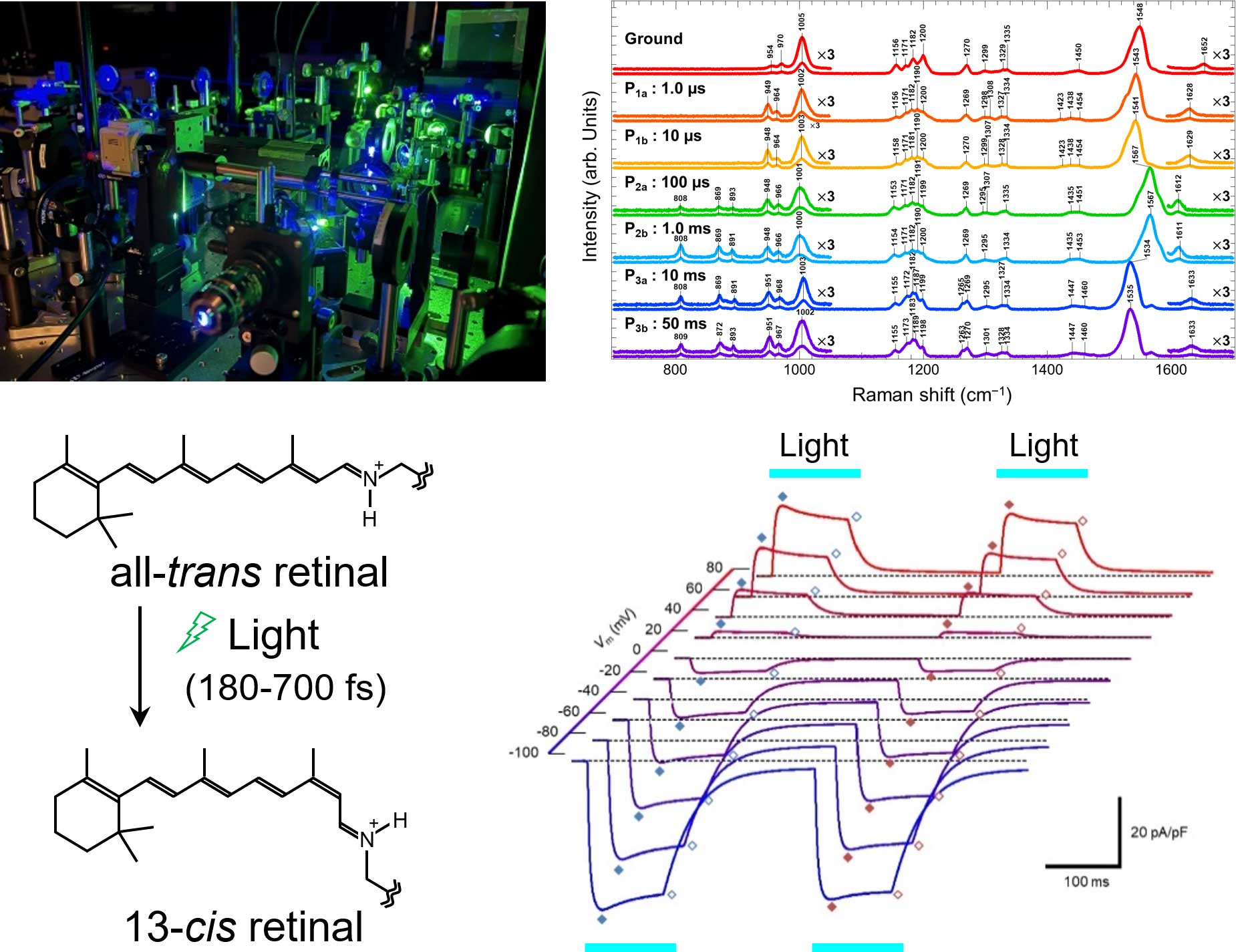Inoue Group

- Affiliation
-
Functional Materials Group
(concurrent with Laser and Synchrotron Research Center) - Courses
- Chem., Sci.Adv. Mat., Frontier Sci.
 Research Associate NAGATA, Takashi
Research Associate NAGATA, Takashi
 Project Research Associate KATO, Yoshitaka
Project Research Associate KATO, Yoshitaka
Research Subjects
- Functional and spectroscopic studies on the mechanism of molecular function of photoreceptive membrane proteins, rhodopsins
- Application of advanced spectroscopy for biomolecular study
- Exploration of novel photoreceptive proteins using genome big data
- Elucidation of functional determinant factors of biomolecules and the development of novel functional molecules using machine learning methods and experimental automation
Most living organisms use sun light as energy source for their biological activity and information source to recognize environmental change. In this photobiological events, a wide variety of photoreceptive proteins play the central role.
Our research aims unified understanding of the mechanism of biomolecular functions of various photoreceptive membrane proteins called “rhodopsins”. The chemical elementary process of these supra complex photoreceptive proteins is studied by time-resolved laser spectroscopy and vibrational spectroscopy, and we are promoting further research by combining biochemical and electrophysiological techniques to achieve multi-layer understanding from atomic and molecular to cellar and individual levels. Furthermore, whereas we are developing novel artificial biomolecules for the application to optogenetics and so on, based on the fundamental insights, exploration studies of new photobiological phenomena and related molecular groups, and developments of machine learning technology and experiment automation methods are being conducted with genome big data accompanying the development of genome analysis technology in recent years.


